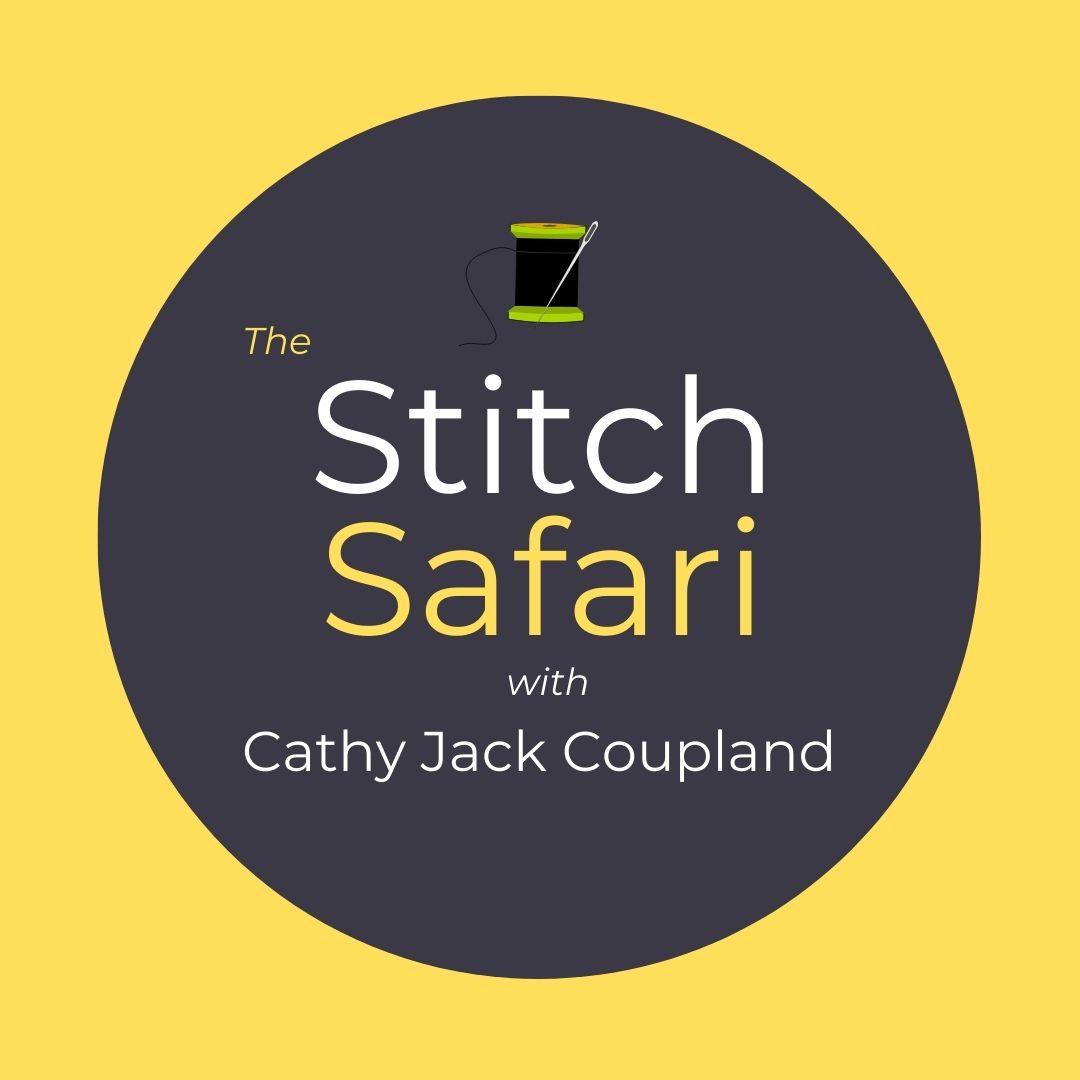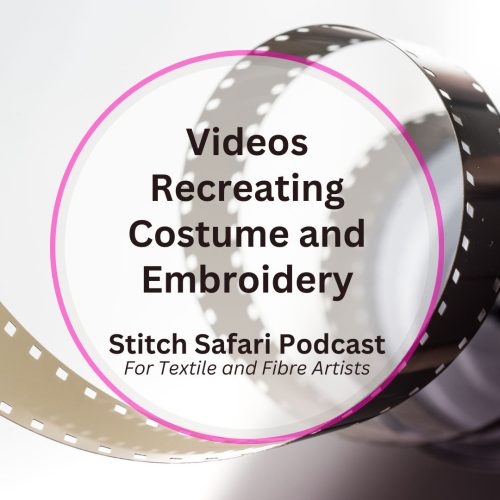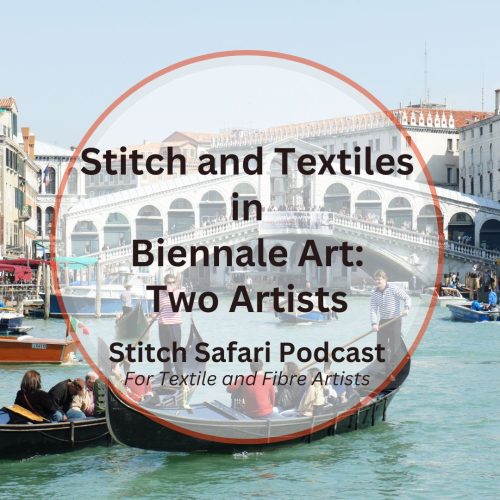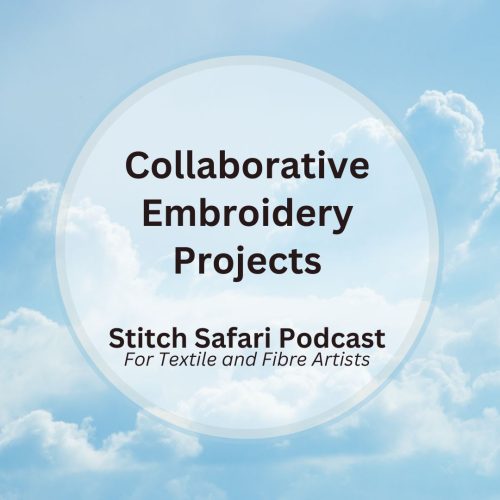The idea of using either paper or metal in embroidery work is to add to the offering of infinite creative options available to the modern embroiderer.
Metal thread embroidery has a close attachment to the symbolic significance of gold, representing the magical power of the sun, enabling the display of wealth and status through its opulent applications.
It was also a means of artistic expression in many societies through jewellery, textiles, fashion, and even architecture, incorporating not only gold’s exquisite beauty and symbolism, but creating huge visual impact – just view museum collections of surviving tapestries, garments, and furnishings made by ancient embroiderers from Egypt, China, and Europe.
So it’s no surprise that metal itself was used as soon as some innovative embroiderer worked out just how to do it.
Coin embroidery has a long history in Iran dating from the Safavid period 1501-1736 – specific to the Sistan and Baluchistan regions, although neighbouring countries created similar work, due to their close proximity and commonality of borders.
And based on museum collections, coin embroidery was used to adorn bed covers, cloths, wall hangings, wedding walls, hats and horse and camel adornments.
Both gold and silver coins were stitched around the hats of wealthy women, and men wore embroidered turbans decorated with golden coins and precious stones.
Often these coins were engraved with birds, fish, and other motifs, believed to contain hidden spiritual meaning and, mixed with their shamanic beliefs, became a popular and widespread craft – where a needle and thread are simply used to attach the coins to the base-layer fabric, creating patterns of overlapping coins that jingle and tinkle with movement.
Could this be termed an early edition of performance art?
Stitching onto paper appears to date as far back as 1820 when perforated paper sheets became available for Victorian needleworkers, becoming a trendy craze, peaking in the 1870s.
Sometimes simple card-based stitching kits were produced for children, but by the 1900s specially designed canvas and linen-based needlework kits became more readily available for the avid embroiderer.
Perforated paper needlework used punched paper or cardboard with evenly spaced holes. The paper was both pliable and durable, so long as it didn’t get wet, with some containing a high rag content.
They could be purchased in different sized counts just like modern-day canvas work and cross-stitch fabrics, with the most popular designs consisting of biblical sayings, greetings, and popular song titles.
Printing onto paper developed in the 1870s, making paper embroidery more appealing as stitchers didn’t have to count from a chart to work the design – plus the kits could easily be purchased through magazines and stores. They were simple, fun to do, not overly expensive, and could be worked by children or invalids as embroidery was considered good therapy.
And surprisingly, perforated paper kits can still be purchased today offering new adaptions of the original designs, with modern designers utilising computer drawing programs to create downloadable designs for the tech-savvy embroiderer.
Well-known embroiderer, Mary Corbet writes in a blog on her Needle’n’Thread website on how to embroider your own Christmas cards, and a number of books have been published on the subject.
American embroidery artist, Jessica Kelly, stitches directly onto vintage book pages adding a tactile layer to yellowed and ageing papers using muted thread colours, giving the work a delicate, ethereal quality that becomes an embossed-like feature.
Other artists embroider directly onto old dictionary pages and old maps, some overprinting the text with images, and backing with muslin prior to stitching.
South African artist Nicholas Hlobo uses embroidery, weaving and paper to begin a conversation exploring complex social issues of gender race and ethnicity to create intricate 3D embroidered paper artworks.
Bianca Severinjs equates the intensive manual labour used to execute her shredded and torn paper artworks with the labour of the hand embroidery she uses.
Numerous other embroidery artists embroider paper, including Astrid Polman, Jason Kriegler, Lisa Kokin, Jean Rill-Alberto, and Sónia Aniceto.
A number of textile artists also work with metal.
Valerie Campbell-Harding and Maggie Grey published ‘Celtic Inspirations for Machine Embroiderers’ in 2002, focussing on innovative methods of working with metals and wires.
Maggie Grey and Jane Wild published ‘Paper, Metal and Stitch’ in 2004, offering mixed media artists even more scope for creativity.
Thin sheets of metal shim are available in copper, brass and aluminium. They can be heated with a simple candle flame to produce richly coloured effects from deep rosy pinks, to dark blues and greens. Vinegar also provides some interesting results.
These sheets can be embossed, stitched by hand or machine, decorated with beads, crinkled with a paper crinkler or cut into shapes.
Thin wires can also be used to make coiled, coin-shaped spirals that either sit flat on the fabric surface, or when wound around a pencil, produce a 3D spiralled coil.
So with a vast selection of hand and machine-made papers that can be cut, torn, burnt, scrunched, layered, creased, pierced, painted or etched, along with the visual and tactile qualities of using metal, mixed media artists are really now spoilt for choice.





